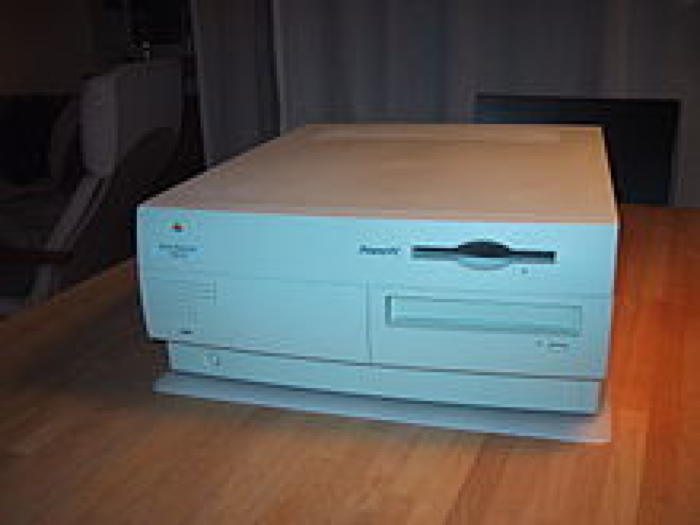Power Macintosh 7500/100 (Power Pc)
W/2013/01/00017

The Apple Power Macintosh 7500/100, based on the TNT architecture, features a 100 MHz PowerPC 601 processor, 8 MB or 16 MB of RAM, a 500 MB or 1.0 GB hard drive, a 4X CD-ROM drive, and built-in S-video for video input as well as RCA ports for video and sound input. Please note that single-stream video output is supported by this model, but dual-stream output is not.Although the Power Macintosh 7500/100 case looks similar to the earlier \\\"high profile\\\" Mac desktop case, it has a completely new \\\"flip open\\\" internal design that makes upgrades considerably easier.The Power Macintosh 7500 was one of the first PCI capable Macs manufactured by Apple Computer. It was released alongside the Power Macintosh 7200, and the Power Macintosh 8500 in October 1995. The 7500 had a PowerPC 601 processor rated at 100 MHz that was replaceable via a daughtercard. It also featured full composite video and s-video input capability, but no output, as the 7500 was designed to be a video conferencing system, not a multimedia editing machine—this was the 8500\\\'s task. The 7500 and 7200 featured a unique swing open chassis called \\\"Outrigger\\\" that allowed for easy upgrades, as the entire motherboard was accessible to the user after the hinged drive sleds were opened.
There were two derivative models: the Power Macintosh 7600, was identical to the 7500 except for the CPU; the 7600 used a PowerPC 604 or 604e processor instead of the 601. The Power Macintosh 7300, was identical to the 7600, but lacked the video inputs found in both the 7500 and 7600.
In the 7500 and its derivatives, the main bus runs at 45MHz or 50MHz (set by the CPU daughtercard), and the cpu at integer or half-integer multiples of this speed. The bus is temperamental, and can show sensitivity to different kinds of RAM or of L2 cache. Some cpu upgrades attempt to drive the main bus at a faster clock-rate, but success is not assured.
Quelle: http://en.wikipedia.org/wiki/Power_Macintosh_7500